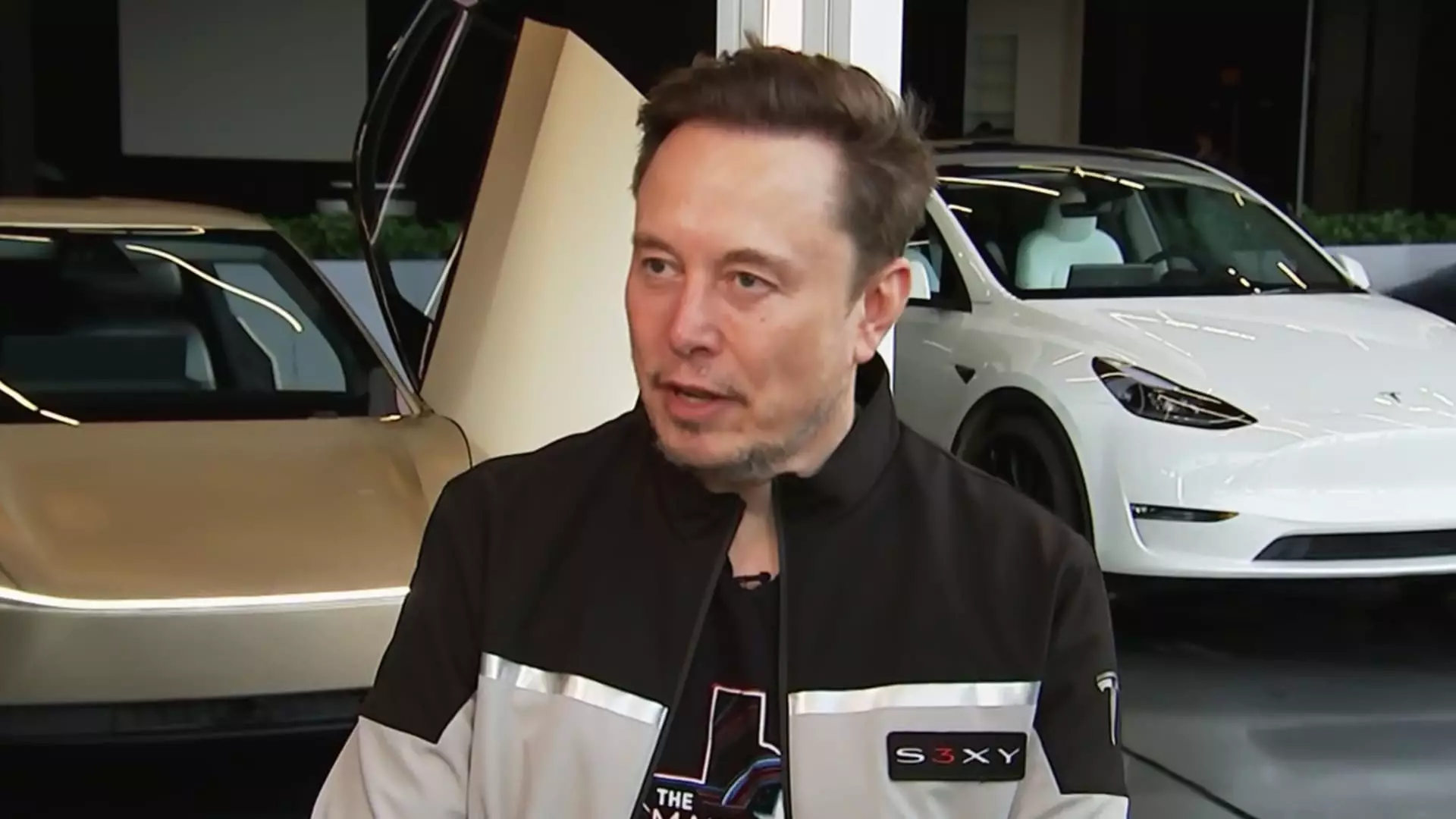Tesla has long been a trailblazer in the electric vehicle market, but the recent announcement by CEO Elon Musk regarding the launch of robotaxis has set a new benchmark for the industry. By the end of June, Austin, Texas, will play host to the inaugural fleet of Tesla’s Model Y autonomous vehicles, a bold move that could redefine urban transportation. Musk’s vision for a driverless future is characterized by optimism and high aspirations; however, it’s essential to scrutinize the feasibility of such an ambitious plan.
In a candid interview, Musk disclosed that Tesla would initially introduce only ten robotaxis to rigorously test functionality and safety before scaling operations. This cautious approach—starting small while hoping for rapid expansion—poses questions about the underlying technological maturity of the self-driving cars. Is this cautious rollout a sign of confidence or a necessary hedge against undertaking a colossal risk?
The Technology Behind the Vision
What sets Tesla’s robotaxis apart from competitors like Waymo lies chiefly in its reliance on advanced camera systems and artificial intelligence rather than expensive lidar and radar technologies. Musk has made it clear that he believes this strategy will facilitate a more scalable and cost-effective approach. However, the ramifications of this technology choice are significant. Can camera-based systems ever match the precision of lidar, especially in complex driving conditions that human drivers navigate daily? The industry’s future largely hangs in the balance as Tesla pushes the envelope towards a less sensor-reliant framework.
The launch plan involves rigorous geofencing within Austin, creating a controlled environment where the robotaxis can operate. While this approach allows for fine-tuning safety measures, it also raises concerns about the quality of customer experience. Will passengers feel comfortable and empowered when they know their rides are predominantly confined to specified areas? Moreover, the absence of human safety drivers will undoubtedly spark debate regarding accountability in case of any mishaps.
Regulatory and Public Response
Public sentiment towards autonomous vehicles has been mixed, often laden with apprehension regarding safety and regulatory compliance. Tesla’s previous controversies and Musk’s polarizing political affiliations may compound the challenges ahead. Many consumers have witnessed the company’s rollercoaster ride over the years—from aggressive promises about fully autonomous vehicles to looming concerns about production quality and revenue drops. Although Musk claims a rebound in demand, one must wonder how much public perception has been swayed by external factors.
Musk’s dual role as a key advisor to political figures amidst a backdrop of environmental advocacy raises ethical questions. Consumers often prefer to support companies that align with their values, leaving Tesla vulnerable to backlash that could impact its sales. In instances of declining stocks and automaker revenues—Tesla saw a 20% drop in automotive revenue in the first quarter of 2025—such dilemmas become paramount. While Musk dismisses the importance of political views on the purchasing choices of consumers, the truth remains that such affiliations can either enhance or undermine the trust requisite for innovation.
Elon Musk: Driving Forward
Despite these controversies, Musk remains unfazed in his pursuit of leading Tesla into an era dominated by fully autonomous travel. His commitment to steering the company for the next five years reflects a tenacity that is both remarkable and controversial. Musk’s wealth, with an estimated net worth of $376 billion, provides him the leverage to push through challenges, but it’s critical to assess whether substantial financial backing can truly translate into sustainable, ethical technological advancement.
As the launch date approaches, the wormhole of questions surrounding legality, safety, and overall effectiveness broadens. Can Tesla’s audacious dreams materialize into real-world success? More importantly, can they do so without compromising the core safety standards that passengers and regulators expect? The road to Tesla’s robotaxi future is lined with challenges, excitement, and complex ethical considerations, illustrating that while innovation beckons, constant scrutiny is essential to ensure that progress does not come at the expense of safety and accountability.

